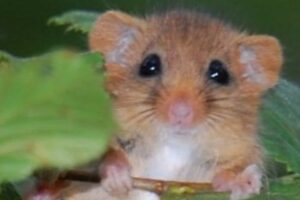What are Local Nature Recovery Strategies?
Local Nature Recovery Strategies (LNRS) are a new approach to setting priorities for nature at a local level in England. They are a statutory requirement, defined in Sections 104 to 106 of the Environment Act 2021. More information can be found at Defra regulations and guidance summary document.
Watch our 3 minute video below to find out more about the LNRS
View the DRAFT species spreadsheet
The DRAFT species spreadsheet has been prepared for the March 2025 LNP Conference.
This draft version demonstrates how the finished species spreadsheet will function, as well as indicating where the team is at with the Devon Species of Conservation Concern List in the Devon LNRS.
Please be aware that this is NOT a completed version and has multiple blanks and errors throughout.
How can you get involved and who to contact?
Complete our questionnaire, We would love to hear your thoughts about how this Strategy could benefit you and nature so we would really appreciate any time you can spare on filling this out – thank you in advance!
For general queries, ideas or offers of help please email LNRS@devon.gov.uk
If you would like to be kept up to date with progress and receive invitations to conferences and other events please join our forum and sign up to our newsletter.
What will they contain?
The statutory requirements are a ‘statement of biodiversity priorities’ and a ‘local habitat map’. The Strategies must include:
- A Description of the area and its wildlife
- Opportunities
- Priorities for restoring wildlife
- Actions need to achieve the wildlife priorities and also achieve other socio/economic priorities such as food control, clean water, improved health and wellbeing and carbon sequestration (through nature based solutions).
- A Map – showing areas of existing importance for wildlife and areas where we want to focus action.
- So remember – DOPAM!
Who will prepare them?
The Secretary of State has appointed Devon County Council as the Responsible Authority to develop the LNRS in conjunction with Supporting Authorities and all other interested stakeholders, especially landowners and managers. Supporting Authorities include all Devon Local Authorities (East Devon District, Teignbridge, South Hams, West Devon, Torridge, North Devon, Exeter City, Mid Devon, Torbay Council and Plymouth City Council), Dartmoor National Park, Exmoor National Park and Natural England.
What are we doing in Devon?
Devon overview project plan (as of January 2025).
- Updating our baseline information on habitats and species.
- Talking to wildlife experts to identify the wildlife priorities (updating our Devon Special Species list etc).
- Mapping our habitats and investigating models to see if they can help us identify where we want to focus effort.
- Talking to partners to identify how nature restoration can help achieve. targets relating to water quality, flood control, health and wellbeing etc.
- Starting to talk to delivery partners to identify how we can ensure the LNRS helps them to deliver the priorities in the LNRS.
- We held a Warm up webinar on 14th of November 2022 to set the scene – details below.
- We also held a Conference for 220 partners on 13th June 2023.
- We have created a Questionnaire where you can contribute any thoughts at any time – see below.
How will the LNRS be used ?
It will provide local planning authorities and developers with information to enhance the planning system, including the delivery of Biodiversity Net Gain requirements, and investment in our urban green spaces. It will guide public and private investment, including through the new Environmental Land Management Schemes (ELMS). It will support communities and businesses in their actions to protect and enhance Devon’s land and marine environments, and the benefits we gain from them, such as health, access and learning.
Previous Events
-
Woody habitats update webinar
Ross Kennerley, a local Devon expert is leading on Woody habitats for the Local Nature Recovery Strategy. September 24, he provided an update on how the Woody habitats are being incorporated into the development process and an overview of the LNRS as a whole.
Watch the webinar on YouTube here.
-
Conference June 2023
Our LNRS Conference took place on June 13th 2023. You can see the Questions & Answers from the day on our Q & A webpage
-
Pilot Webinar
On October 25th 2022 we hosted a national webinar to hear from the 5 LNRS pilot studies. Defra set up the 5 LNRS pilots in August 2020 and these ran until May 2021. Defra proposed the pilot areas from a long list of areas already active in spatial planning for nature so that the pilots were in a good position to progress quickly and lessons could be learnt in a timely way.
Please find the links to the webinar presentations below;
The meeting recording can be found here.
-
Warm-up Webinar
On November 14th 2022, we hosted a free Warm-up webinar for everyone to learn more about what we are doing here in Devon to recover nature, improve our access to it, and how you can get involved.
Sector presentations can be viewed below;
- Update from Defra– Julian Harlow
- Devon LNRS overview– Sarah Jennings
- Health and Wellbeing– John Amosford
- Water– Carolyn Cadman
- Wildlife– Harry Barton



